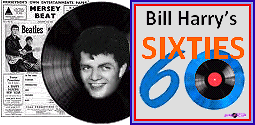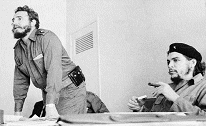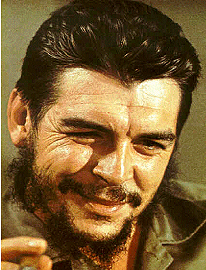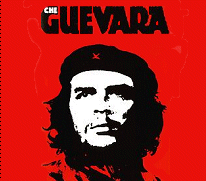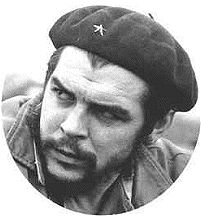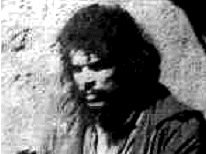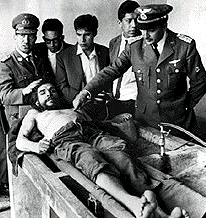|
|
After visiting a leper colony he travelled to Guatemala, Mexico and
Peru. He was involved in a revolution in Guatemala which was foiled
by the CIA and also participated in another failed uprising in Mexico.
It was while he was in Guatemala that he was given the nickname Che,
which was said to be an affectionate term for ‘you’ in Argentina. He
joined Fidel Castro in 1955 and was to become Castro’s advisor and also
trained his guerrillas. He became a folk hero after the rebels won control
of the Sierra Maestra in Cuba and accompanied Castro when the revolutionary
army entered Havana on 1st January 1959 and deposed the American-supported
dictator Fulgencio Batista.
Che was the third most powerful figure of the Cuban revolution after
Fidel Castro and his brother Raul and was given Cuban nationality. In
1961 he was appointed director of the National Bank and also Ministry
of Industry. He firmly believed that social revolution was the only
way for an underdeveloped nation to change its circumstances and he
implemented mass nationalisation throughout Cuba.
In December 1964 he made a speech to the General Assembly of the United
Nations during which he condemned America for its intrusion in Vietnam
and also criticised Russia and China for their conflicting ideologies,
which he said had split the anti-Imperialists. Che wrote two books ‘Reminiscences
of the Cuban Revolutionary War’ and ‘Guerrilla Warfare’, which proved
inspirational to revolutionaries in Brazil, Nicaragua, Vietnam and the
Congo.
This handsome, courageous figure who had decided to dedicate his life
to helping third world people free themselves from oppression and hunger,
became a major influence on student campuses in America and Europe.
His exploits became legendary, his face was featured on best-selling
posters – and there was even a fashionable London boutique named after
him.
In 1965, soon after writing ‘Man And Socialism In Cuba’, he disappeared
only to resurface in the Congo. Che became disillusioned with the situation
in Africa, mainly due to the attitude of the very people he was trying
to help. He left the Congo and turned up in Bolivia but he was betrayed
by Bolivian peasants and captured after being shot and wounded. On 9th
October 1967, at the age of 30, he was killed by the authorities.
One of the soldiers responsible for his capture, confessed to killing
Che, saying that he went into the room where Guevara was lying badly
wounded and fired into his left nipple. He admitted doing it under instruction
and was told that, in order to destroy the myth of an invincible guerrilla
commander, Che must not be exhibited as a prisoner. The soldier was
promoted to sergeant major and rewarded financially for committing the
deed. An autopsy revealed that Che had a bullet wound in the left clavicular
region, another in the right clavicular region, one more in the region
of his right rib cage, two bullet wounds in the region of his left rib
cage, a bullet wound in the left pectoral region, another in the left
thigh, one in the right leg and a further bullet wound in the right
forearm.
 |
|


